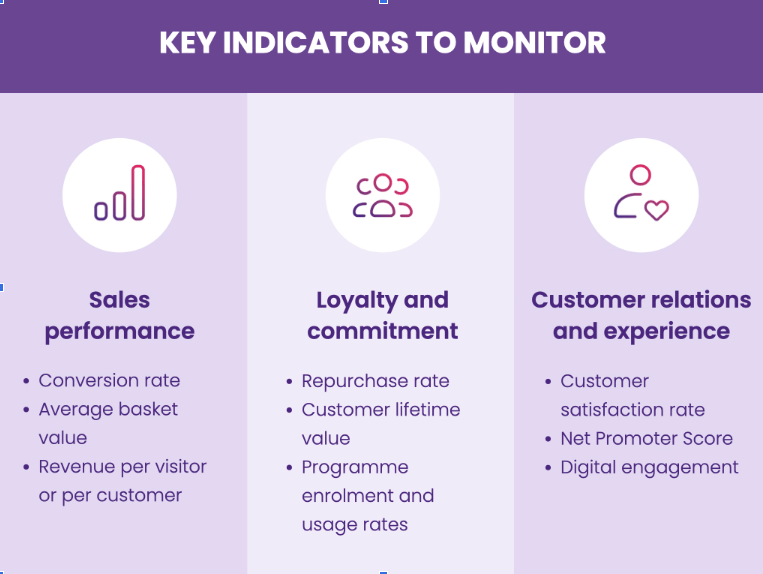Hyper-personalization and data: towards a new omnichannel retail customer experience

By 2025, retail companies aiming for differentiation will need to deliver a genuinely unique customer experience. Hyper-personalization has emerged as a key strategy in achieving this.
Unlike traditional personalization, which is typically confined to a few segments or specific campaigns, hyper-personalization utilizes real-time data, artificial intelligence, and a unified customer view to create seamless and individualized experiences.
Strong consumer expectations
Towards a demand for tailor-made experiences
Consumers now demand tailor-made experiences that are consistent across all channels whether it’s a POS, website, mobile app, or social networks. Simple personalization efforts like adding a name to an email or suggesting generic products no longer suffice to generate satisfaction and engagement.
Several factors contribute to this heightened expectation:
- an explosion of available data from purchases, navigation, and in-store interactions;
- comparison with the high standards set by e-commerce giants;
- and market saturation prompting customers to look for added value in their relationship with brands.
In practice, customers want their needs to be anticipated rather than merely recognized. This means providing timely advice, product recommendations, or tailored services, ensuring a continuous experience across various sales channels without any disruptions.
Key figures of personalization in retail customer experience
Personalizing the customer experience significantly boosts commercial performance. BCG reports that leading retail companies in personalization see revenue growth that is 10 points higher than their competitors.
Personalization also drives satisfaction and loyalty, with 86% of customers stating it influences their purchasing decisions and 56% of online shoppers favoring companies that offer personalized recommendations. Moreover, 71% of consumers see personalization as a standard, while 76% express frustration when it’s absent.
Altogether, strong personalization offers a competitive edge with BCG estimating up to $570 billion in additional growth in retail by decade’s end through a customer preference-driven approach.
The post-cookie shift and the challenge of first-party data
The gradual phasing out of third-party cookies marks a significant shift in digital marketing by reducing visibility on customer tracking across external channels. Consequently, traditional advertising strategies like retargeting and mass acquisition become less effective.
In this new context, first-party data has become pivotal for retail. Companies need to leverage customer information they collect directly such as online purchases, POS history, interactions, and loyalty programs. These reliable and exploitable data points allow for the design of advanced experiences, including recommendations, targeted offers, and customized communications.
This shift also depends on mutual trust, as consumers are more willing to share detailed information with brands when they perceive clear benefits, such as smoother service, time savings, or exclusive perks. Transparency and GDPR compliance are crucial in transforming data into a driver of customer experience.
What is hyper-personalization exactly?
Definition and difference from traditional personalization
The traditional method of personalization relies on general or segmented customer data age, location, gender and results in simple actions like a newsletter with the recipient’s name or a promotion sent to a segment of identified customers. This approach is static and lacks granularity. In stark contrast,
Hyper-personalization uses unified, real-time customer data,
- such as recent purchases,
- navigation journey,
- past interactions,
- and purchase context
To anticipate customer needs through AI and machine learning. This makes experiences dynamic and continuously evolving both online and in-store.
For instance❌ A traditional approach sends Julie an email offering 10% off on dresses.
✅ Hyper-personalization instead equips store staff with precise data as Julie enters, allowing them to offer her the exact dress model she recently viewed online in her size with a targeted offer.
Use cases in e-commerce but also in-store
In the realm of e-commerce, hyper-personalization means product recommendations tailored to each customer’s purchase and navigation history. Homepages adjust to the client’s profile or context, such as current weather or location. Additionally, abandoned cart follow-ups are more strategic, offering personalized product suggestions while promotional offers consider loyalty levels and purchase frequencies.
In-store, sales associates use clienteling applications to access comprehensive customer data. Push notifications can alert staff when a customer enters, showing the availability of items they viewed online.
This seamless blending of online and offline channels elevates customer satisfaction. For example, a customer may spot shoes online and find them in-store in their size thanks to unified data, followed by tailored recommendations post-purchase.
POS and unified platform: the key to omnichannel personalization
Use cases in e-commerce and also in-store
Traditionally, the POS was limited to processing customer payments with its data used primarily for accounting purposes. Today, POS systems are pivotal sources of first-party data that enhance the customer experience. Integrated with a unified platform, they help create a comprehensive 360° view of the customer, crucial for effective personalization.
Real-time data utilization is transformative. As customers check out, their profiles can be identified and enriched in the CRM, allowing for immediate personalized actions like discounts or recommendations.
Additionally, in-store data connects with e-commerce data, ensuring smooth and comprehensive service personalization across touchpoints. This unified vision supports highly effective in-store personalization strategies.
The role of CRM, clienteling, and loyalty rules
CRM systems provide the foundation for customer understanding, enabling tailored marketing scenarios and seamless experiences through centralized first-party information such as :
- customer identity,
- purchase history,
- and multichannel interactions.
Clienteling tools empower sales associates with real-time access to customer preferences and behaviors, enhancing the personal touch in seller-customer interactions.
Moreover, loyalty rules are crucial for customer engagement, allowing for customizable programs with statuses, points, and benefits triggered by specific contexts or example, a targeted offer after a certain number of purchases.
Enhance your growth with Orisha Commerce by leveraging deeper customer insights and creating personalized experiences!
Artificial intelligence and personalization: what is already possible?
Dynamic product recommendations
Dynamic product recommendations are driven by real-time analysis of customer behavior and preferences, such as
- clicks,
- navigation,
- purchases,
- and internal searches.
Algorithms fine-tune the products showcased to match each customer’s profile, ensuring the experience continuously adapts to each interaction.
These targeted suggestions boost relevance, leading to increased average order values and higher conversion rates. The “infinite catalog” effect is minimized as customers are effortlessly guided to the most relevant products. Simultaneously, the visible assortment can be optimized to feature strategic or in-stock items.
Utilizing Tweakwise, e-commerce navigation becomes personalized, and product displays adapt to each visitor. Internal search results better align with user intentions, and automated merchandising balances retailer objectives with a customized shopping experience.
The outcomes of this strategy include
- increased revenue per visitor,
- strengthened loyalty through seamless experiences,
- and maximized data valorization.
Customer scoring in-store
Customer scoring involves assigning a grade or profile to each consumer based on their behavior, including purchase history, visit frequency, average basket, and omnichannel engagement. This helps identify customer lifetime value (CLV) and tailor the in-store experience accordingly.
Connected to the POS and CRM systems, this scoring appears on the clienteling tool used by sales associates. When recognized through a loyalty card, mobile app, or e-commerce account, a customer’s score is displayed in real-time, allowing for immediate adjustments in the interaction.
Artificial intelligence refines this process by integrating predictive criteria such as purchase probability, churn risk, and product interest. Continuously updated based on new data,
scoring enables sales associates
- to prioritize efforts on high-potential customers,
- automatically trigger rewards for the most engaged,
- and anticipate the needs of regular customers before they express them.
Intelligent search and contextual journeys
Intelligent search uses natural language understanding to interpret complex or approximate queries, automatically correct typos, and manage synonyms, reducing friction and speeding up the product search process.
The search journey also becomes contextual and adapts in real-time. Factors like viewed pages, browsing history, and location directly influence the displayed content to match individual preferences.
These strategies enhance the relevance of the shopping experience, thereby increasing conversion rates and optimizing cross-selling and up-selling through personalized suggestions.
How to take action?
Prerequisites
Successful hyper-personalization hinges on robust technology. First, a modern POS system that collects real-time data and integrates with e-commerce, CRM, and loyalty programs is essential. Second, a CRM system to identify, segment, and track customers throughout their journey, fueling personalization scenarios and empowering sales associates.
Third, quality and unified data are crucial; data must be clean, free from duplicates and errors, providing a 360° view. Effective data governance includes regular updates, GDPR compliance, and customer transparency.
Without alignment between POS, CRM, and data management, personalization efforts remain fragmented and inconsistent. Effective hyper-personalization relies on the strength of these integrated systems.
3 implementation scenarios
Scenario 1: Start with digital
Start by personalizing product recommendations on your website and app. Enhanced abandoned cart follow-ups with suggestions based on purchase history can yield quick results. Conduct A/B tests to measure the effectiveness accurately. The aim is to rapidly increase conversion rates and average order values.
Scenario 2: Activate omnichannel with the store
Integrate the point of sale by equipping sales associates with clienteling tools connected to the CRM, enabling individualized service. Synchronize the POS system with digital channels to create seamless journeys. Enhance loyalty rules to differentiate and trigger in real-time. This strengthens brand engagement by ensuring seamless continuity between online and offline experiences.
Scenario 3: Move towards AI-driven hyper-personalization
Fully utilize artificial intelligence as your final step. Implement intelligent search engines, dynamic recommendations, predictive scoring, and context-based automated journeys. These components transform segmented personalization into fully bespoke experiences.
Which KPIs to track
Commercial performance indicators
- Track the conversion rate to gauge the direct impact of personalization on sales.
- Monitor the average basket value to assess the effectiveness of cross-selling and up-selling.
- Revenue per visitor or customer is a crucial e-commerce metric.
Loyalty and engagement indicators
- The repurchase rate indicates the company’s ability to build lasting relationships.
- Customer lifetime value (CLV) measures long-term profitability.
- Membership and usage rates of loyalty programs showcase the effectiveness of personalized rules.
Relational and experiential indicators
- Monitor the customer satisfaction rate (CSAT) following personalized interactions;
- the Net Promoter Score (NPS);
- and digital engagement metrics like clicks and opens.
These indicators reflect the emotional connection and loyalty towards the brand.

Recap
Summary of challenges and expected benefits
- Customers now expect tailor-made and consistent experiences across all channels.
- First-party data, based on customer preferences and behaviors, is essential in a post-cookie world for ensuring reliability and compliance.
- POS, CRM systems, and unified data are critical technological foundations. AI enables practical applications, such as dynamic recommendations, customer scoring, and intelligent search.
- The measurable benefits include higher average basket value, improved conversion rates, increased loyalty, and optimized customer lifetime value.
- Personalization is a competitive advantage that can reduce acquisition costs and accelerate growth. Hyper-personalization has become crucial to stay relevant, meeting new consumer expectations and standards set by market leaders.




